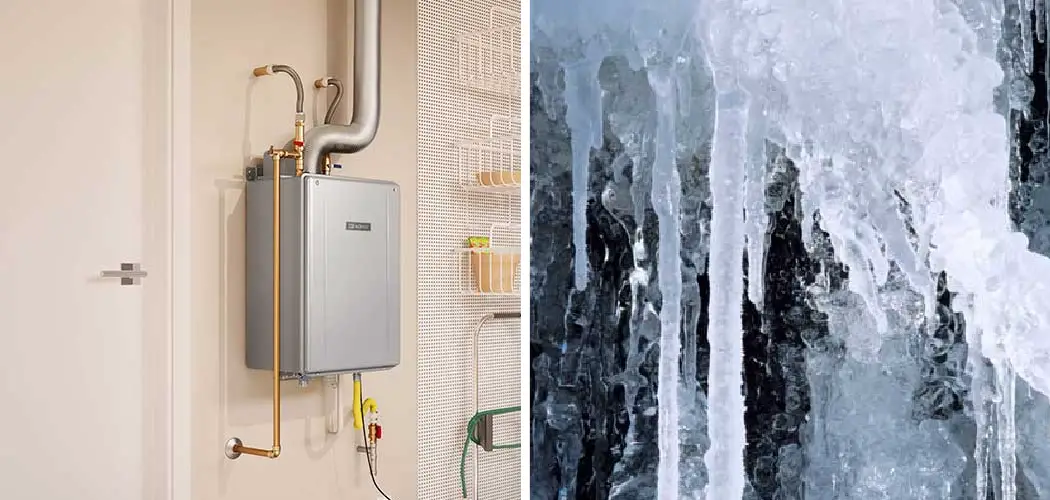Are you ready for winter? If you have a tankless water heater, one important step to prepare for the cold weather is to winterize it properly. As the weather gets cooler, keeping your tankless water heater running efficiently and safely is of paramount importance. Here’s how to winterize tankless water heater.
With winter upon us, it’s important to take the proper steps to prepare your tankless water heater for the changing elements. Not only can this help you avoid costly emergency repairs, but it will also give you peace of mind that no matter how cold the temperatures outside may be, you and your family won’t have any unexpected surprises when using hot water inside!
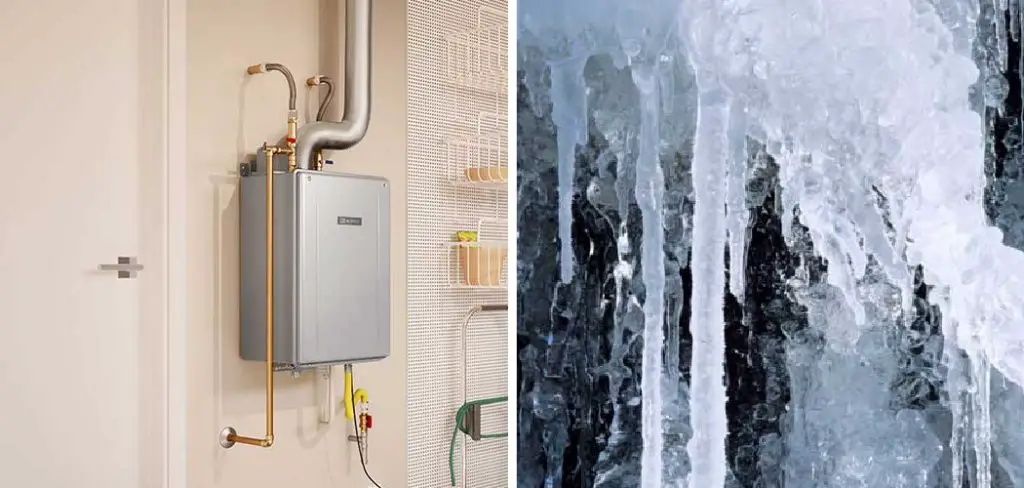
In this blog post, we’ll discuss some key ways in which you can winterize a tankless water heater efficiently and effectively so that it continues to provide energy-efficient and reliable heating all year round.
What are the Benefits of Winterizing a Tankless Water Heater?
When properly winterized, a tankless water heater will function efficiently and safely throughout the year’s coldest months. The benefits are as follows:
1. Improved Efficiency: Winterizing a tankless water heater offers improved performance, as it ensures that all parts of the system are functioning correctly and without any damage.
2. Extended Lifespan: By properly winterizing your tankless water heater, you can help extend its lifespan and avoid expensive repairs or replacements in the future.
3. Cost Savings: By reducing any wear and tear that freezing temperatures could cause, you can help save money on energy bills over time.
Now that we’ve discussed the benefits of winterizing a tankless water heater, let’s move onto
how to actually do it.
What Will You Need?
Before you begin winterizing your tankless water heater, it’s important to make sure that you have all of the necessary supplies. You will need the following:
- Rags or towels
- Hot and cold shut off valves
- Drain hose
- Garden hose
- Rubber gloves
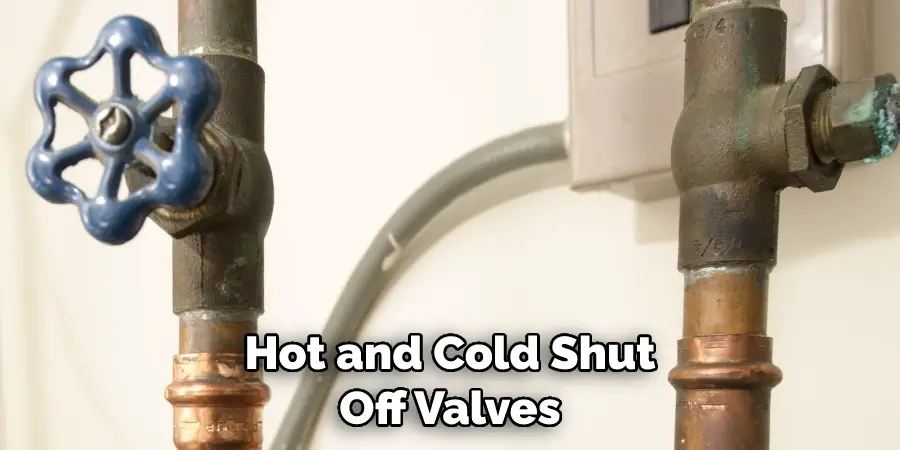
Once you have all of the materials that you’ll need for the job, it’s time to get started!
10 Easy Steps How to Winterize Tankless Water Heater
When winterizing a tankless water heater, there are several steps that must be taken in order to ensure proper functioning.
Step 1. Shut Off the Main Water Supply:
The first step to winterize a tankless water heater is to shut off the main water supply. You can do this by closing the shut off valves. The valve is located near the inlet and outlet pipes.
Step 2. Turn Off the Power to the Heater:
Next, turning off the power to the tankless water heater is important. This can be done by flipping the breaker switch located near the unit or unplugging it from a wall outlet if applicable. If the tankless water heater is gas-powered, then shut off the gas supply as well.
Step 3. Drain Hot Water Tank:
Once all of the power has been turned off, you need to drain the hot water tank. To do this, attach a garden hose to the drain valve on the bottom of the tank and open it up to let out any remaining water in it. Be careful not to get the hose too close to the electrical connections.
Step 4. Remove Screen Filter:
The screen filter must be removed before winterizing your tankless water heater so that debris won’t get stuck in there and cause problems. This can be done with a pair of needle-nose pliers. Additionally, you can use a rag or towel to help catch any debris from the filter.
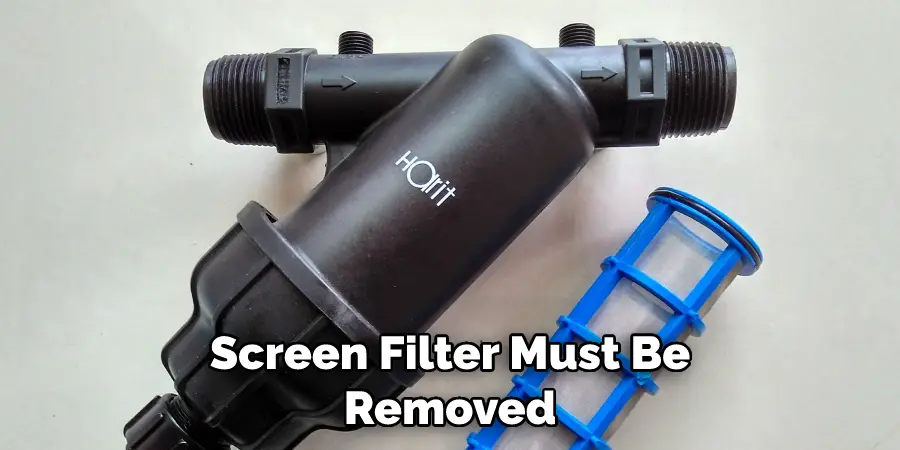
Step 5. Flush Out Cold Water Supply Inlet:
This step is important for preventing sediment build-up, especially if you have hard water in your area. To do this, turn on the cold water supply inlet valve and let it run for a few minutes. Ensure that all of the water is gone by turning off the valve and checking for any remaining water.
Step 6. Drain Hot Water Outlet Pipe:
Next, attach the drain hose to the hot water outlet pipe and open the valve so that any remaining hot water will be expelled. This step helps ensure that all the hot water is gone and won’t cause any damage over the winter. Keep the hose connected for a few minutes after the water has stopped flowing.
Step 7. Insert Rags Into Pipes:
Once all of the water has been drained out, use rags or towels to plug up both the inlet and outlet pipes to make sure no moisture gets back into them during winter months. Use rubber gloves to make this easier. Because the rags can absorb any moisture, it’s important to change them out regularly.
Step 8. Open Drain Valve:
Now that the rags or towels are in a place open up the drain valve at the bottom of the tankless water heater to release any remaining air and moisture. You can also use a garden hose to flush out any debris from the system. It’s important to make sure all of the water is gone before you move on.
Step 9. Refill Tank:
Slowly refill the tank with fresh cold water until you hear a gurgling sound, then close it off. This will help to flush out any remaining debris from the inside and prevent any build-up over time. If the gurgling sound persists, repeat this process until it stops.
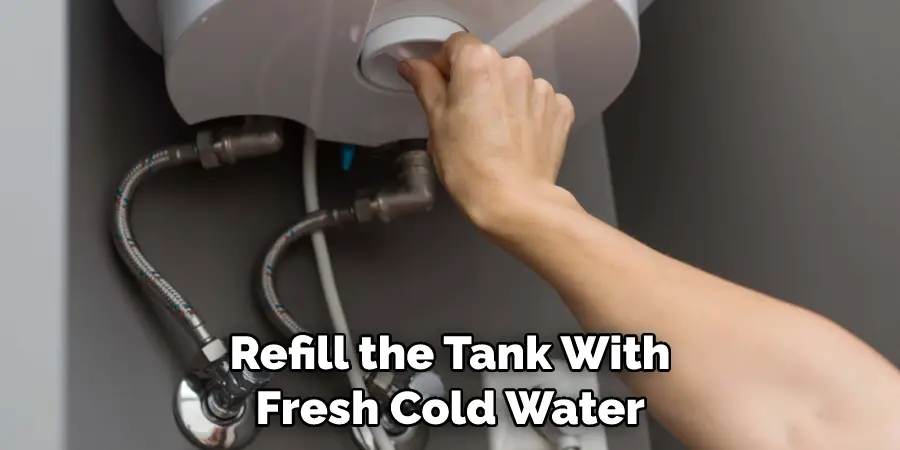
Step 10. Replace Filter:
Finally, install a new filter screen and replace any worn parts. This will help to keep the water flowing freely and prevent any damage to your tankless water heater. Be careful to follow any manufacturer’s instructions for how to install the filter.
Now that you’ve gone through all of the steps, it is important to regularly check up on your tankless water heater throughout the winter months. Contact a professional for assistance if there are any signs of unusual activity or noise. Proper maintenance ensures that your tankless water heater stays in tip-top shape no matter how cold it gets outside!
5 Additional Tips and Tricks
1. Make sure to follow your tankless water heater’s manufacturer’s instructions for how to winterize.
2. Before the cold weather arrives, flush out the sediment from the tankless water heater and check for any loose connections or drips in the lines.
3. Disconnect all hoses or pipes connected to the tankless water heater before winterizing it.
4. If you plan to store your tankless water heater away during winter, cover it with a heavy tarpaulin or other waterproof covering and secure it tightly with rope; this will help protect it from snow and ice buildup while in storage.
5. To protect against freezing temperatures, consider investing in a freeze protection kit containing special valves that will automatically shut off the water supply if temperatures drop too low. Taking these extra steps can help ensure your tankless water heater stays in optimal condition throughout the winter months.
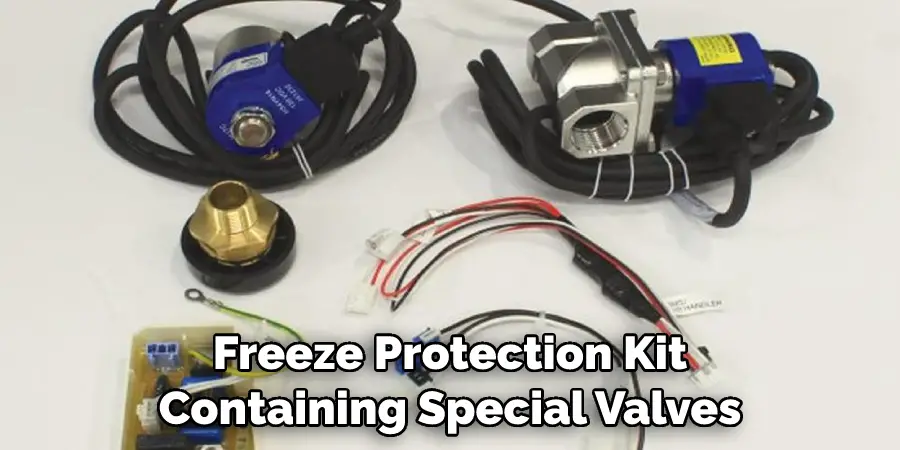
By following these tips and taking the necessary precautions, you can make sure that your tankless water heater is properly protected against cold weather and remains in good working order for many winters to come. With proper care and maintenance, you can rest assured that your tankless water heater will provide reliable hot water service during even the coldest of winter months!
5 Things You Should Avoid
1. Do Not Leave the Burner on While You Are Away: Leaving the burner on while you are away can cause damage to your system, as it is not designed to run without water.
2. Do Not Use Antifreeze: Antifreeze can clog and corrode your tankless water heater if it gets inside the unit.
3. Do Not Shut Off Gas or Electricity: This could prevent the device from heating up and providing hot water for your home.
4. Do Not Drain or Bypass the Unit: Draining or bypassing the unit will leave it susceptible to freezing, which can cause permanent damage.
5. Do Not Cover With Insulation: Insulation will cause moisture buildup, leading to rust and corrosion in the long term.
Therefore, the winterized tankless water heater is essential to ensure that your system is well-maintained and ready for the cold season. With proper precautions and preventative measures, you can protect your investment by taking the right steps to winterize your tankless water heater.
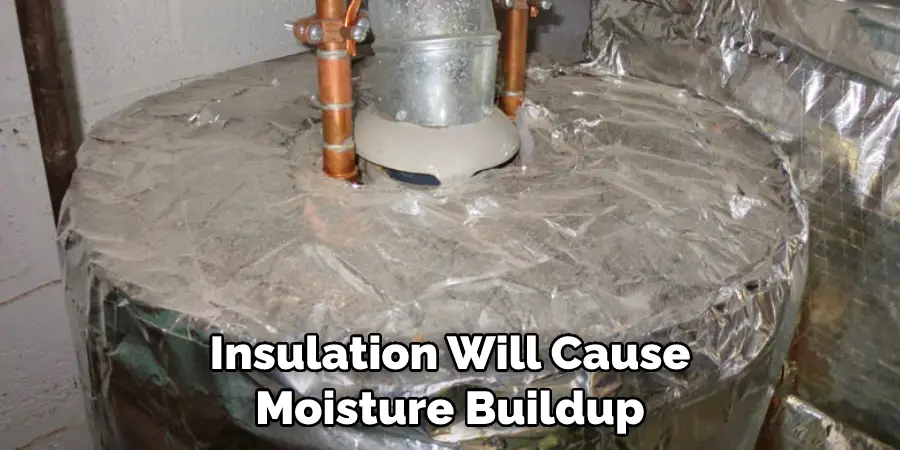
When Should You Drain Your Tankless Water Heater?
For the maximum efficiency and to extend the life of your tankless water heater, it is recommended that you drain your unit once a year. This can help prevent sediment from building up in the pipes and damaging components within the system.
Additionally, draining helps to keep your water clean and free of impurities that other methods may not filter out.
The best time to do this is in late fall, when temperatures start to drop, as this will give you ample time to prepare for the cold winter months ahead. You should also make sure to flush out any stored hot water before performing any maintenance, as this will ensure all particles have been removed from the system.
How Often Should You Winterize Tankless Water Heaters?
It depends on how often the heater is used and how cold the temperatures get where you live. Generally, once a year should be enough, but if you live in an area with extreme temperatures, it may be beneficial to winterize your unit more often. Always make sure to check manufacturer instructions when performing maintenance on your tankless water heaters.
.
You should also check the cold weather kit each year to ensure all components are in working order. This includes checking the thermostat, control board, and fan blades for any signs of wear or malfunction.
Winterizing a tankless water heater is essential to maintaining your system, ensuring that it functions properly throughout the year and continues to provide efficient hot water for your home.
With proper care and maintenance, you can help keep your system running smoothly for many years to come. When in doubt, contact a professional for assistance.
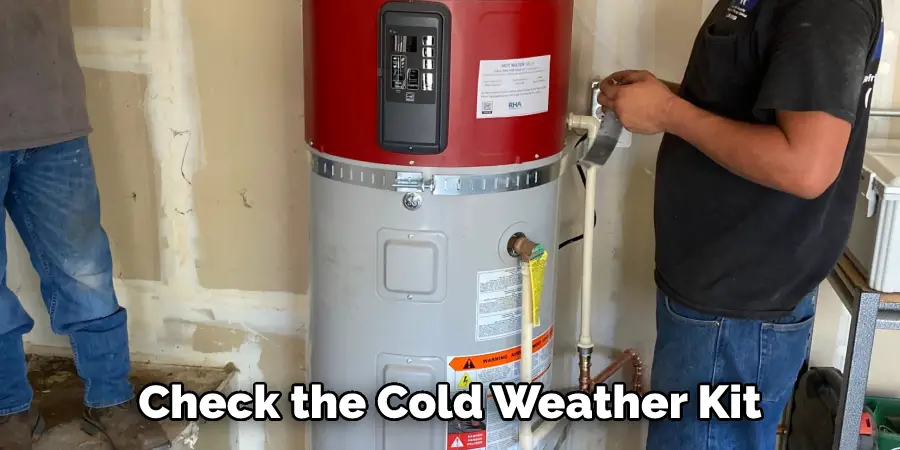
What Happens if You Turn Off the Water to a Tankless Water Heater?
If you turn off the water to a tankless water heater, it can cause serious damage to your system. This is because these types of heaters rely on a constant flow of water in order to generate heat and maintain efficiency. Without this flow, components inside the unit can become damaged or even freeze up during cold weather, which can cause an expensive repair bill.
Therefore, it is important to ensure that the water supply remains running at all times and that necessary maintenance is done regularly. If you are ever unsure about winterizing tankless water heaters or how often maintenance should be performed, contact a professional for assistance.
Overall, winterizing tankless water heaters is a process that should be taken seriously in order to ensure your system remains efficient and reliable throughout the year.
Conclusion
Winterizing a tankless water heater can be a time-consuming process. However, if done correctly, it can significantly lengthen your water heater’s lifespan and provide you with great peace of mind knowing it will work correctly through the cold months ahead. It is important to properly drain the tank, scrub out any deposits or corrosion, check for leaks, flush the system, inspect electrical wiring, and reconnect your tankless heater once it has been winterized.
Although it may seem like an overwhelming task at the moment, taking the proper steps to winterize your tankless water heater will give you continued use of a safe and reliable system for years to come, with these tips in hand and a few extra tools handy, winterizing this appliance is nothing more than basic prudent maintenance that anyone can manage.
Hopefully, the article on how to winterize tankless water heater has been helpful in giving you the knowledge and tools necessary to do so. Keep these tips in mind, and you can have peace of mind knowing your tankless water heater is winterized and ready to go for the cold months ahead!
You May Read Also Keep Your Drains Clean

